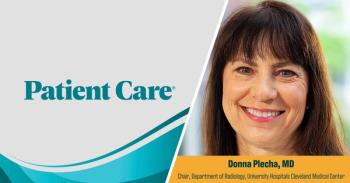
Physical Activity Trims Breast Cancer Risk
Women who exercise may lower their risk, although those who have received hormone replacement therapy may not get the same benefit. Organized programs can help.
The risk of breast cancer tends to be lower in women who participate in physical activity. Several studies presented at the recent American Society of Clinical Oncology annual meeting in Chicago demonstrate that even moderate levels of physical activity can help women who have breast cancer live longer lives. However, women who have received hormone replacement therapy (HRT) may not get the same benefit from exercise. Community-based programs at Curves or a LIVESTRONG program at YMCAs can help patients with breast cancer increase their fitness and lose weight, improving their quality of life.
Find out more about the associations between physical activity and breast cancer on the pages that follow:
High Levels of Physical Activity Reduce Breast Cancer Risk
• A lower risk of breast cancer among physically active women has been reported frequently, but the risk in women who use HRT appears to be higher.
• A systematic literature search of studies that measured physical activity in breast cancer identified 38 studies including more than 4 million women.
• The risk of breast cancer in women who engaged in the highest level of physical activity was 12% lower than in women who performed low levels of or no physical activity.
HRT Nullifies Exercise Effects
• However, there was no reduction in breast cancer risk associated with physical activity in women who used HRT.
• The capacity of physical activity to reduce the risk of breast cancer in women probably has been underestimated by studies conducted after 1989, when HRT use was more prevalent.
• Physical activity probably decreases the risk of breast cancer through lower circulating estrogen levels, but HRT use seems to nullify this action.
• Source: Pizot C, Boniol M, Mullie P, et al.
BMI and Physical Activity in Triple-Negative Breast Cancer
• Modifiable lifestyle factors, including body mass index (BMI) and physical activity, have been well-studied for overall breast cancer prognosis.
• No prospective study has investigated BMI and physical activity in triple-negative breast cancer, defined as ER-/PR-/HER2-.
• These researchers conducted an analysis using data from 5 breast cancer survivor cohorts in the United States, the UK, and China.
High Physical Activity Extends Lives
• The 12,240 stage I-III breast cancer cases with known ER/PR/HER2 status included 1695 triple-negative cases (13.9%).
• Patients self-reported their recreational physical activity.
• After a mean follow-up of 9.5 years, the researchers observed a trend for increasing physical activity and improved breast cancer-specific survival and overall survival.
• This was significant only for high levels of physical activity, the equivalent of 4 or more hours of moderate-intensity physical activity per week.
• Source: Nechuta SJ, Caan BJ, Chen WY, et al.
Weight Loss Study in Breast Cancer
• Weight loss among overweight and obese breast cancer survivors may lead to improved disease-free survival.
• Researchers conducted a 12-month, community-situated physical activity and telephone-based dietary change weight loss intervention in female breast cancer survivors.
• The 25 evaluable patients, median age 57 years, were assigned a telephone counselor and given a 12-month membership to a local Curves fitness center, which offered a 30-minute circuit-based exercise program.
• Patients were counseled 14 times over 12 months and were instructed to exercise 150 minutes per week, walk 10,000 steps per day, and decrease caloric intake by 500 kcal per day.
Meaningful Weight Loss Over 12 Months
• At 12 months, 96% of patients met the diet goal and 28% of them met the exercise goal.
• Average weight loss was 7.6%; the median weight loss was 7.1%.
• The researchers concluded that it is feasible to recruit and retain breast cancer survivors in a multicenter weight-loss trial using dietary change plus physical activity to achieve clinically meaningful weight loss over 12 months.
• Source: Greenlee H, Lew D, Hershman DL, et al.
LIVESTRONG at the YMCA Program for Cancer Survivors
• Physical activity has been linked to cancer risk and outcomes, yet many survivors are inactive.
• Researchers evaluated the impact of a 12-week LIVESTRONG at the YMCA program, an exercise program available for cancer survivors at YMCAs across the United States.
Patients With Early-stage Cancer are Mostly Inactive
• A total of 186 participants were randomized, 95 to the LIVESTRONG Program and 91 to a control group.
• The majority of patients had stage I-II disease; half had breast cancer.
• A majority of participants were inactive at baseline; only one-third reported performing at least 150 minutes of physical activity per week.
LIVESTRONG Program Encourages Physical Activity
• Participants randomized to the LIVESTRONG Program attended an average 83% of scheduled sessions over the 3-month program.
• LIVESTRONG participants experienced significant increases in physical activity-three-fourths exercised a minimum of 150 minutes per week compared with one-fourth of controls.
• Exercisers showed improvements in fitness and quality of life compared with controls.
• Source:
Take-home Messages:
• The promotion of physical activity may help lower the risk of breast cancer, but HRT may ameliorate the effects of exercise.
• High levels of physical activity can help patients with breast cancer live longer lives.
• A combination of physical activity and caloric restriction can help patients with breast cancer achieve sustained weight loss.
• The LIVESTRONG program could provide a platform to increase physical activity, fitness, and quality of life in cancer survivors.
Newsletter
Enhance your clinical practice with the Patient Care newsletter, offering the latest evidence-based guidelines, diagnostic insights, and treatment strategies for primary care physicians.

